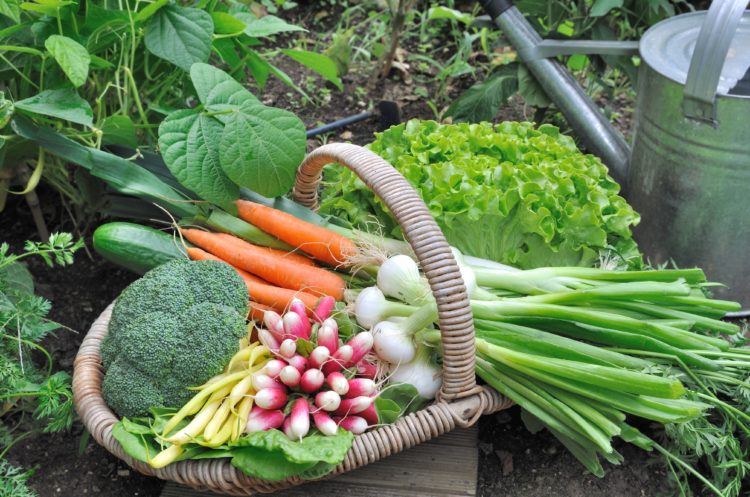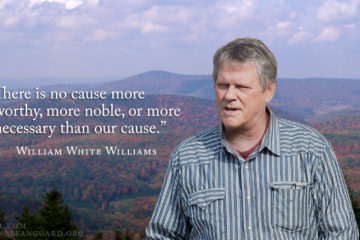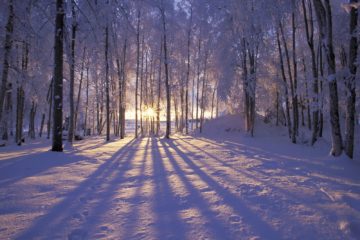Survival Gardening 101
by Nelson Rosit
Introduction
YOU’RE NOT really a survivalist, perhaps not even a reluctant prepper, but if you’re reading these words you probably harbor serious doubts about the long-term viability of the present system. With this in mind individuals and families should, at the very least, take a few prudent steps to help mitigate future disruptions. Having a supply of potable water, fuel, nonperishable food, first aid supplies, and weapons suitable for self-defense is just common sense.
With preparedness in mind, one of the most profitable activities a family can pursue is growing some of their own food. Gardening provides healthy, outdoor exercise that produces food of superior quality at below supermarket prices. It is also an educational activity teaching children about the natural world. If you have a background in agriculture or horticulture the information presented here will be “old hat.” This article is intended for those with little or no knowledge of gardening, but want to start planting this spring.
First, a few general recommendations: No matter how enthusiastic you feel – start small. A 10’ x 12’ plot would be good, even smaller if you lack free time. When you start small you’ll make small mistakes. Learn as you grow. Expand your operation as you gain knowledge. Also, by starting on a modest scale you’re not likely to experience burnout. While you can grow an amazing amount of food in a small space, forget romantic ideas about self sufficiency. In the beginning your family will be able to eat out of the garden for several months a year. As you expand you can start preserving your harvest by canning, pickling, and freezing to supplement your diet during the winter.
I define survival gardening as growing fruits and vegetables for home consumption in a way that produces the maximum output with a minimum of inputs. Really, it’s just old-fashioned utility gardening. It’s the type of gardening most of our ancestors did for centuries. It’s the type of gardening still practiced in much of Eastern Europe and Russia today. In the past every abode, from the smallest cottage to the grandest manor house, had a kitchen garden.
Site Selection
The first thing you need for a garden is some ground. No hydroponics here; remember, minimize inputs. Container gardening — that is, growing in pots — also involves increased inputs, though if all you have is a patio, deck, or balcony, go for it. You cannot, however, use plain garden soil in containers. You’ll need potting mix, though you can save money by making your own.
The most important consideration in site selection is sunlight. Other shortcomings can be overcome, but most of the plants you’ll be growing do best in full sun. Sunlight supplies the energy for photosynthesis. You should have an area with a minimum of eight hours of direct sunlight, more is better. Clear away shrubs and small trees, larger trees can be limbed up to let in more light. Incidentally, if you rent rather than own your property and need to dig up lawn for a veggie garden keep in mind that grass can be replanted and turf quickly reestablished.
After sun, level ground is a big plus, the flatter the better. Hillsides can be terraced, but remember – minimum inputs. If you do have a slope, contour planting is required. Run your furrows perpendicular to the slope so each row acts as a little dam to prevent erosion during a heavy rain. Furrows also promote drainage on level ground.
Speaking of rain – a water source is required. Even if you live in a region where precipitation is usually reliable, rainfall can never be counted on. Seeds and seedlings should be watered in, and summer droughts are also possible. Trucking and toting water in is a last resort. Don’t over water. A couple of deep soakings during a dry spell is much better then spraying with a garden hose every evening.
So far I haven’t mentioned soil except to say you can’t use plain field soil in containers. The ideal soil is a sandy or silty loam with high natural fertility and a slightly acid ph. There is little chance your soil will be ideal, but unless you live on a rock ledge there is no need to bring in new soil –- remember, minimum inputs. The idea is to improve your existing soil. Fortunately, there’s a cure all for soil — organic matter (OM).
The most common organic materials used in gardens are leaves and grass clippings. One great thing about these is they are free, in fact many people throw them away. Grass clippings are excellent –- they decompose quickly and have a relatively high nitrogen content. Make sure the clippings you use came from turf that was not treated with harmful pesticides. Many lawns today are treated with a broad-leaf herbicide such as 2, 4-D which is exactly what you don’t want in your garden because most vegetables are broad-leaf plants.
What does OM do? If you have light sandy soil, excessively drained (i.e., doesn’t hold moisture), OM will add body and water holding capacity. If you have heavy, poorly drained clay soil OM will break up the clods making it more friable and crumbly. Although most OM does not contain high levels of nutrients it increases the ability of plants to take up the nutrients present. Manure is one type of OM with relatively high levels of nutrients. Well-rotted manure is easier and more pleasant to use, and will not burn your plants. Do not use wood chips or other woody materials. They have little nutrient value, decompose slowly, and may even tie up nutrients in the soil. Extra OM can be stored in a compose pile.
My enthusiasm for OM might lead you to believe I’m an organic gardener, but strictly speaking I’m not. If you want to try all organic, more power to you. A bit more about that later. Organic and inorganic fertilizers are not mutually exclusive. OM will lessen the need for inorganic fertilizers, but I use both. In many states the agricultural extension service offers low-cost soil testing that will tell you which nutrients your plot lacks. In lieu of a soil test you can make a light application of a general purpose fertilizer such as 10-10-10 which is 10 percent nitrogen, 10 percent phosphorus, and 10 percent potassium. Do not use so called lawn food that is high in nitrogen.
The use of inorganic pesticides such as insecticides and herbicides are generally not necessary in smaller garden plots. Having a variety of fruits and vegetables grown on a small scale reduces insect pests. Weeds can be eliminated by hoeing or hand pulling. Don’t let weeds get ahead of you. A few minutes weeding twice a week is much easier than trying to clean out an over-grown garden. While you’re at it you can pick off any offending bugs.
Tools and Equipment
You’re going to need a few hand tools to get started. At a minimum you’ll need a long-handled digging shovel to turn over the soil, and a hoe to break up clods and for weeding. Experience will tell you what other hand tools to acquire. You’ll need a wheelbarrow for carrying things. Don’t buy a Mickey Mouse model; get a six cu. ft. or contractor’s size. Medieval manuscripts show workers using wheelbarrows, and they were probably in use long before that time. No conveyance is as maneuverable for carry heavy loads as a wheelbarrow. If you expand your operation you may want to buy a rototiller. The best are rear-tine models with at least an 8 hp engine. Buy quality tools, take care of them, and they’ll last a long time. Keep in mind that garden tools are often available at yard sales, and power equipment can usually be rented by the hour or day.
What to Grow
Now that that you’ve selected and prepared a site the next question is: What to grow? This is a fairly easy one to answer: What does your family like to eat? And what will grow well in your area? Obviously growing a great crop of zucchini that no one wants to eat is a waste of time and money. The choice is subjective, but I’ll make a few suggestions. Almost everyone likes vine-ripe tomatoes. In fact tomatoes are the most widely grown backyard vegetable. Cucumbers are ridiculously easy to grow, and can be eaten fresh, or pickled whole or in relish. Potatoes are a survivalist crop par excellence.
Some desirable crops may take up too much space for a small garden. Sweet corn is great, but requires a relatively large area to produce a good yield. Certain vine crops such as pumpkins and watermelons tend to sprawl over large areas.
Another consideration in crop selection is your climate. Some vegetable varieties require a very long growing season. So, if you are like me and live in USDA hardiness zone 3/4 your selection is somewhat limited. Fortunately, in recent decades plant breeders have produced quickly maturing varieties so that even far-north locations can now grow most common vegetables.
If you own rather than rent your land and plan to stay there a while I recommend investing in fruit trees and berry bushes. Fruit trees (buy them bare root in the early spring) can be a bit pricey, but properly cared for they will produce for many years. Again, be sure the varieties you plant are compatible to your soil and climate. Where I live we can grow excellent apples, but a peach tree would never make it through the winter.
Conclusions
Once you start gardening you might find yourself in a community of gardeners. Although there is a bit of friendly competition for the sweetest strawberry or the earliest tomato, most gardeners are free with information and advice. Another source of information already mentioned is your extension service. They have a wealth of know-how particular to your region. If you doubt that government can play a constructive role in society the extension service might convince you otherwise.
Gardening tends to be a “White thing.” Organic gardening especially is sometimes dismissed as SWPL, but the prewar organic movement, particularly in Europe, had heavy racial overtones. Since the 1960s the Left has appropriated “Green” causes. Before World War II, however, the back-to-the-land and organic farming movements were led by White men with a strong sense of racial identity. (1) One such leader, Henry Williamson, was the subject of an article in the old National Vanguard print magazine. (2)
Well there you have some of the basics. So, start planning to get growing this spring.
NOTES
(1) For a general overview on this subject see: Nelson Rosit, “Racial Ecology, Part II: Brown and Green, 1920-1945.” The Occidental Quarterly, 16 no. 1 (Spring 2016) 31-51.
(2) Mark Deavin, “Henry Williamson: Nature’s Visionary,” National Vanguard, #117 (March-April 1997) 17-20.
* * *
Source: White Biocentrism








Feel like starting a new civilization on a new planet without Jews.
I believe homesteading and growing your own meat, dairy and eggs is much more efficient than gardening.
I believe you are correct, kamerad.
Yes, indeed. We require meat and dairy as our primary nutrition. Definitely not fruits and veggies, which can’t even be found in nature in the form that they are sold in supermarkets. And definitely weren’t around Northern Europe 2000 years ago.
I haven’t eaten animal flesh since 1976, and am quite healthy indeed.
Any particular reason for gong vegetarian, Mr. Strom? Is it the ethics or the health?
It was a combination of the two. At the age of twenty, there were two people in my life who cared about me and who I respected who urged me to try it — for health, ethical, and environmental reasons. (I think I was also affected by hearing, years earlier, about what happened to male chicks in commercial hatcheries, seeing the struggles of landed fish, and by a relative who told me the story of how he could not shoot a stag when, on a hunting trip, he saw how beautiful and noble the creature was one foggy morning.) I did try it. I did feel better, energized, lighter on my feet. I did get ill less often. In recent years, my sweetheart encouraged me to go vegan with her.… Read more »
Of course, factory farms are cruel to all the animals. That is why I want people to support pastures, homesteads and farms, where animals live the best of their lives and are healthier. Humans have been eating meat since the beginning of time and we are alive because of it. But agriculture and massive growing of single crops also kills animals, even more than meat eating, believe it or not. Plenty of mice, foxes, moles, bugs, worms and other animals that live in the fields get crushed to death with tractors and combiners. Pesticides, synthetic fertilizers and other chemicals that they put on the crops also pollute the ecosystem, including lakes and rivers, killing many species in the process. And if a deer or a fox runs out of the… Read more »
Thanks for sharing, WhiteSurvivor. There is some truth in what you say about farms; even the most benign of them (and the ones we have today are not very benign) exacting a price in harm to animals and to the environment. There is a cost in death and harm that must be paid in almost everything we do, even building a house. So I say let us live in such a good and elevating way as to make whatever harm we cannot avoid pale in comparison. The calories per acre we can produce with potatoes is far, far higher (16 times) than with beef, for example, and I am reasonably sure that the harm and terror caused to sentient beings is much lower on those dramatically fewer acres, too. You… Read more »
Chimpanzees actually eat meat, Mr. Strom. And so do many other “herbivores”. The just don’t have the proper means to hunt, but when the opportunity arises, they gladly eat meat while they can. https://www.youtube.com/watch?v=TdTXaFtDqZE https://www.youtube.com/watch?v=_zrxshPEYew Even some plants eat animals, like sundew. All plants grow through the decaying flesh of worms, bugs and other smaller animals, which means that not even the plants you consume are vegan. In any case, in a sane and healthy society, everybody should be free to choose their own nutrition. And in some places, like Canada and Australia, for example, raw milk is illegal. And in Britain, they are proposing an extra tax on red meat. So it is very clear that (((they))) are trying to destroy us not only through immigration, perversion of our… Read more »
Very, very unpersuasive videos — actually, the videos come close to convincing me that their authors have a weird quasi-religious obsession with flesh-eating (and rage against those who abstain from it) that borders on madness. You didn’t read my response carefully if you think I don’t know that chimps have figured out how to eat dead animals. I specifically said that they, like people, had done exactly that. And plant roots taking up whatever’s in the soil is supposed to convince me that I need to slaughter, then eat the dead bodies of intelligent, feeling conscious beings, fully as intelligent and emotionally rich as my collie, beings who never did me any harm? — especially when I’m perfectly healthy without doing that? I don’t think so. I am not angry… Read more »
I’m younger than Kevin by several years, have an abnormal ekg, with elevated cholesterol, creatinine, triglycerides, and blood pressure after exercise followed by light-headedness, vision pestered with floaters, ink splotches and a retina ripple, topped off by pre-diabetes. Recently I couldn’t right a dropped motorcycle that I had little trouble righting 2 years ago. But nothing gets our people together like a pig roast!
In general, the ‘preppers’ have the correct vision. Bank interest is low but the price of necessities can increase rapidly during a crisis (10-20-30%!). Having a year’s supply of food (etc) protects you from inflation and gives you plenty of time to think when stuff hits the fan. Start by buying a year’s supply of three cheap non-perishable items this week. Next week buy another year’s supply of three cheap items. Buy what you normally need to buy but solve the problem for a whole year. Every time you do this it will become easier because you already have some of your necessitiesSoon you will be able to afford to store more expensive stuff, and within a few months you will be wondering what to buy because you have it… Read more »
Completely agree. Myself, I’ve started with things that can last for over 4 years. Once those are done I’ve moved to stuff that lasts 2-3 years. Then 1 year. After 1.5 years I have a good backbone of long-lasting goods on top of stuff I’m cycling over a year like you’ve described.
What I really think preppers have right is trying to have some sort of their own food supply growing. Ability to grow your own food is way more valuable that any stored goods in my opinion. That’s probably going to be my next project I’ll be working on. Currently finishing my bug-out setups(mostly various survival gear https://gritroutdoors.com/outdoor-survival/ like portable stove, small camping setup, etc). After that I can start working on my home garden.
Why are flesh eaters hostile toward vegetarians? My mother gave me a beef pot pie when I was 4 years old, and I pushed it away. Ketchup / Catsup is symbolic of blood on the plate. No person can run up to a cow and pierce the skin with their teeth.
Cruelty to animals is common. So-called naturalists and wildlife experts go to the wilderness and tranquilize the most secretive animals to place detection collars and imbed detection software under their skin for surveillance. They do the same offshore. How many animals become sick and die from infection and collar choking?